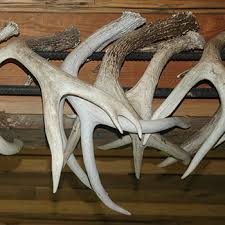Zoology Notes On – Difference Between Horns And Antlers – For W.B.C.S. Examination.
Antlers are paired, branched structures that are made entirely from bone and are shed annually. Developing antlers have a high water and protein content and a soft, hair-like covering known as velvet, which comprises blood vessels and nerves.Continue Reading Zoology Notes On – Difference Between Horns And Antlers – For W.B.C.S. Examination.
As a result of hormonal and environmental changes, the antler ossifies – the growing, spongy bone is converted into harder, thicker lamellar bone – before the velvet falls away altogether. Antlers are usually only present for a few months before being shed and, apart from reindeer, only occur in males.
Horns are unbranched, two-part structures with a bony core and covered by a keratin sheath (the same material found in human hair and nails), which grows from specialised hair follicles. Horns are a permanent feature and, in many species, grow continuously.Pronghorn antelopes (below) are the exception among horned species, having branched, upright horns with a sheath that is shed annually.
Antlers and horns also have different functions. While antlers are mainly used for mate selection during the breeding season (either to attract females directly or to deter rival males through display or combat), horns are generally used for social dominance, territoriality and anti-predator interactions.
Antlers are found in the Cervidae family—deer and their relatives. At the root of each antler is a small, bony growth called a pedicle, and every year, antlers grow out of these pedicles. Antlers are made of bone, and covered with “velvet”—a thin, soft layer of skin and blood vessels that gets scraped off the antler over time.
Later in the year, those antlers are shed, making room for a new set to grow in. That’s why hikers will occasionally find antlers laying on the ground, discarded by their owners. It also means that the huge antlers of a male elk, for instance, are the incredible product of just a single season of growth. Antlers are also an exclusively male accessory, with one exception—in reindeer, antlers can be found on both sexes.
While you’ll occasionally find a shed antler, that’s not true for horns—they’re attached permanently to species in the family Bovinae, or cows and their relatives. Where antlers grow out of a bony stub, horns have a full core of bone.
Instead of skin, horns are covered in a tough coating of keratin, the same substance that makes up human fingernails. Horns are also more likely to be a unisex accessory, with males and females of a species both sporting the appendages.
Please subscribe here to get all future updates on this post/page/category/website


 +919674493673
+919674493673  mailus@wbcsmadeeasy.in
mailus@wbcsmadeeasy.in







































































































